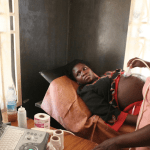What Needs to Change in the Indian Medical Devices Ecosystem for Innovators, Entrepreneurs and Patients
In India, imported products account for 80% of medical device sales. Most of those devices were actually developed for middle and high-income countries and are far removed from India’s unique challenges of accessibility and affordability.
Considering its population, coupled with poor access to affordable health care, India has the opportunity to significantly enhance reach of diagnosis if affordable and user-friendly medical devices can be injected into the health care delivery systems. Indeed, India presents itself as a glowing opportunity for innovators and entrepreneurs. Not only is it a relatively untapped market with significant room for growth due to increasing disposable income, more affordable medical devices could make healthcare far more accessible, specially for the underserved.
Over the last five to seven years, an effervescence of startups and innovators are attempting to build products with significant relevance for many areas of public health. With support from several programs of the public and private sector agencies, at least 500-600 innovators and entrepreneurs have been nurtured across India through early stage funding and incubation support.
Reality-Check
While there is no doubt about the scale and the scope of the opportunity, in case of the medical devices industry, there still remain sobering truths that innovators and entrepreneurs have to confront. That’s especially true when it comes to structural issues like market fragmentation, regulatory challenges, cost-effective distribution, and convoluted clinical and product validation pathways.
Domestically, there are 750–800 medical device manufacturers, with an average investment of $2.3–2.7 million and an average turnover of $6.2–6.9 million. The lack of scale in the domestic manufacturing market leads to a lack of consolidated supply chains to efficiently distribute products at scale. At the same time, medical device distribution suffers from heavy fragmentation due to several challenges such as varied pre-sales requirements from state to state (as required by the Constitution) and overlapping of responsibilities such as inventory support and marketing outreach. As a result, device companies have to hire multiple distributors in order to reach any significant scale and profitability.
The Medical Device Rules, which went into effect in January of 2018, are expected to fill a regulatory void due to the absence of any prior medical device-specific legislation in India. However, the new rules still cover only 498 devices and leave crucial devices like MRIs and CT scan equipment out of the current regulatory jurisdiction. Coupled with lax enforcement, the sector chronically suffers from the prevalence of notorious fly-by-night operators delivering products of inferior quality, giving innovators a bad rap and further delay their adoption.
Challenges in Clinical and Product Validation
Amidst proliferation of a plethora of point-of-care devices and diagnostics, few actually reach the market, as clinical validation continues to be a challenge. Gestation period and time-to-market of innovations, which can drive much-needed affordability and efficiency in health systems, remain stubbornly high due to convoluted pathways across clinical and product validation requirements. Innovators struggle to design protocol-based, statistically significant studies, simulated in real-world clinical settings. This of course is a crucial step to generating objective evidence that can accelerate the adoption of their innovations by a multitude of medical establishments.
As a result, incumbent technologies (however complex, bulky, expensive and inaccessible) continue to enjoy the confidence of medical practitioners. The absence of a predictable regulatory framework combined with limited access to testing beds and domain-based expertise on product-specific regulatory and environmental compliance as well as effective risk-mitigation is hamstringing innovation.
Subsequently, investors have shied away from sustained involvement in the sector, owing to its high-risk nature, long gestation periods and domain knowledge requirements. Purely on a risk-reward basis, investor interest in this space is insignificant including the impact investment funds that have continued to shy away from this space as the return expectations and liquidity in services investments outweigh the odds in product development.
A Way Forward: A Nodal Platform
The current situation clearly points to a pressing need for a nodal platform that can identify, enable and accelerate the most-promising health care innovations towards market entry, adoption and scale. Such a platform can play the twin role of handholding innovators through the multiple valleys of death facing startups and de-risking investors by providing them with the vital domain knowledge for accurate assessments of the risks and rewards. We also need pools of capital managed by those who understand the long product development cycles and the risks associated with them.
In order to create an effective ecosystem for innovators and entrepreneurs, to access the resources they need to create a deep and irreversible social impact and improve the quality of life, especially for the underprivileged and deprived, any such platform would need to have the following components:
- The ability to assess manufacturing readiness for early validation of designs, thereby reducing risk and enabling low and predictable manufacturing costs. (In other words, design for manufacturing.)
- Expertise in design of clinical studies for validation and facilitated access to clinical testing hospitals/PHCs. (Design for validation/trials)
- Customized mentoring for refining the business model, navigating the regulatory landscape, and understanding national and global market dynamics. (Design for business models and regulatory compliance.)
- Long-term, patient risk capital with high business risk appetite suitable for long product development cycles, with a foundation of grants and other non-dilutive capital sources followed by access to working capital. (Design for capital structure and liquidity.)
India is truly at the cusp of a unique opportunity. It stands a real chance at becoming a global hub of innovation and manufacturing of medical devices and can provide the world with the next generation of cutting-edge medical devices.
Whether it can grab the opportunity remains to be seen.
Dhruv Pandey is Portfolio Manager at Social Alpha.
Photo courtesy of Pixabay.
- Categories
- Health Care
- Tags
- manufacturing



